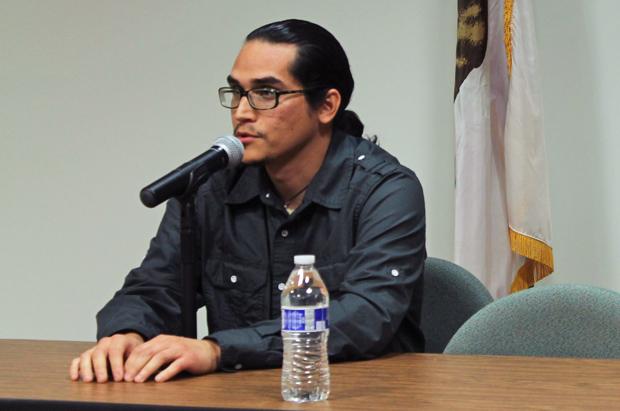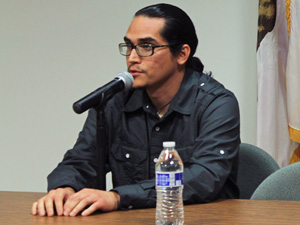
The struggles and triumphs of the early days of CSUN’s Chicana/o Studies department was the main topic during a screening of “Unrest: Founding of the Cal State Northridge Chicana/o Studies Department” Thursday in the Oviatt Library.
Alumnus Miguel Duran directed the documentary, which he began while he was a Chicana/o Studies student at CSUN. The film included archival footage and interviews with CSUN faculty members. Many of the faculty members in the film said the department has its roots in the Civil Rights movement of the 1960s.
“That was the era of the Vietnam protests and when you look historically at the Vietnam War and you see a casualty list, who were they? People of color,” said Raul Aragon, former assistant director of the Educational Opportunity Program (EOP).
Aragon attended CSUN in the fall of 1965 and described his experience in the film.
“Coming to campus the first time was quite a shock, because when I came to campus and looked around there was no one that looked like me,” he said.
This led to the founding of the United Mexican-American Students organization which was the predecessor to MEChA (Movimiento Estudiantil Chicano de Aztlán). Later the establishment of EOP allowed many African-American and Mexican-American students to attend CSUN.
The film showed the plight of Mexican-American students which included the signing of the 12 Point Agreement by the college president at that time, Malcolm Sillars. One of the terms within the agreement was the establishment of the Pan-African Studies department and the Mexican-American Studies department. The rest of the documentary showed footage from various events in CSUN’s history such as the police brutality that followed the Black Student Union occupation of Bayramian Hall, and the silent protest after the burning of the Chicano House.
Rudy Acuña, who was a guest lecturer at the time, was brought in to chair the newly formed Mexican-American Studies department. As part of the process for the department he was told to create 10 course proposals for the program.
“I realized that if I only had 10 classes I would not have any more than 10 classes. I had to hit while the fire was hot,” he said.
Instead, he created 40 course proposals which were all approved by the administration.
The documentary was presented as part of the library’s featured exhibit, “In Protest: The Shifting Paradigms of Collective Social Action” in the Tseng Gallery which features various social action movements during the 20th century.
After the film there was a brief question and answer session with the director. Duran grew up in Pacoima and minored in film production. He said the documentary began when a part-time faculty member asked him to help on a documentary about Chicana/o studies.
“I ended up becoming director, editor, producer, composer, and everything else,” he said. Duran, who was 23-years-old at the time, had never done a feature-length film before and explained how he had handled it. “If you learn to synthesize a project down to its core, it’s easier to process,” he said.
Duran explained that he thought of the documentary as eight short films instead of one long movie. “Each of those films had a beginning, middle and end,” he said. Duran went on to say that he realized he had to tell this story because he is a Chicano and because he’s from the San Fernando Valley. “I’m from the barrio,” Duran said. “I’m from there, so it’s also my history.”
Students in attendance, such as Juan Ramirez, 19, sophomore business marketing major, enjoyed both the film and listening to Duran speak.
“It really had an impact and it really drove the idea home that we need to stick together and we need to fight more for our rights and equality,” Ramirez said. “I always envisioned someone older…he’s a young guy,” Ramirez said, after stating that Duran was not what he expected when he thought of a documentary filmmaker.
Jcquil Constant, 30, interdisciplinary studies graduate student, said the film had an impact on him.
“You’re seeing the contributions ethnic students have made in California and how they have fought,” Constant said. “We should value the opportunities we have.”
Duran said he will be teaching a film class next semester through the Chicana/o Studies department. The course is Chicana/o Studies 495D: Documentary Film Production, which he explained as film and media through the Chicano perspective. “You’re going to learn as you go, which is the best way to learn in my opinion,” he said.
“Unrest: Founding of the Cal State Northridge Chicana/o Studies Department” is available to view on YouTube or for purchase at unrestdoc.com.





